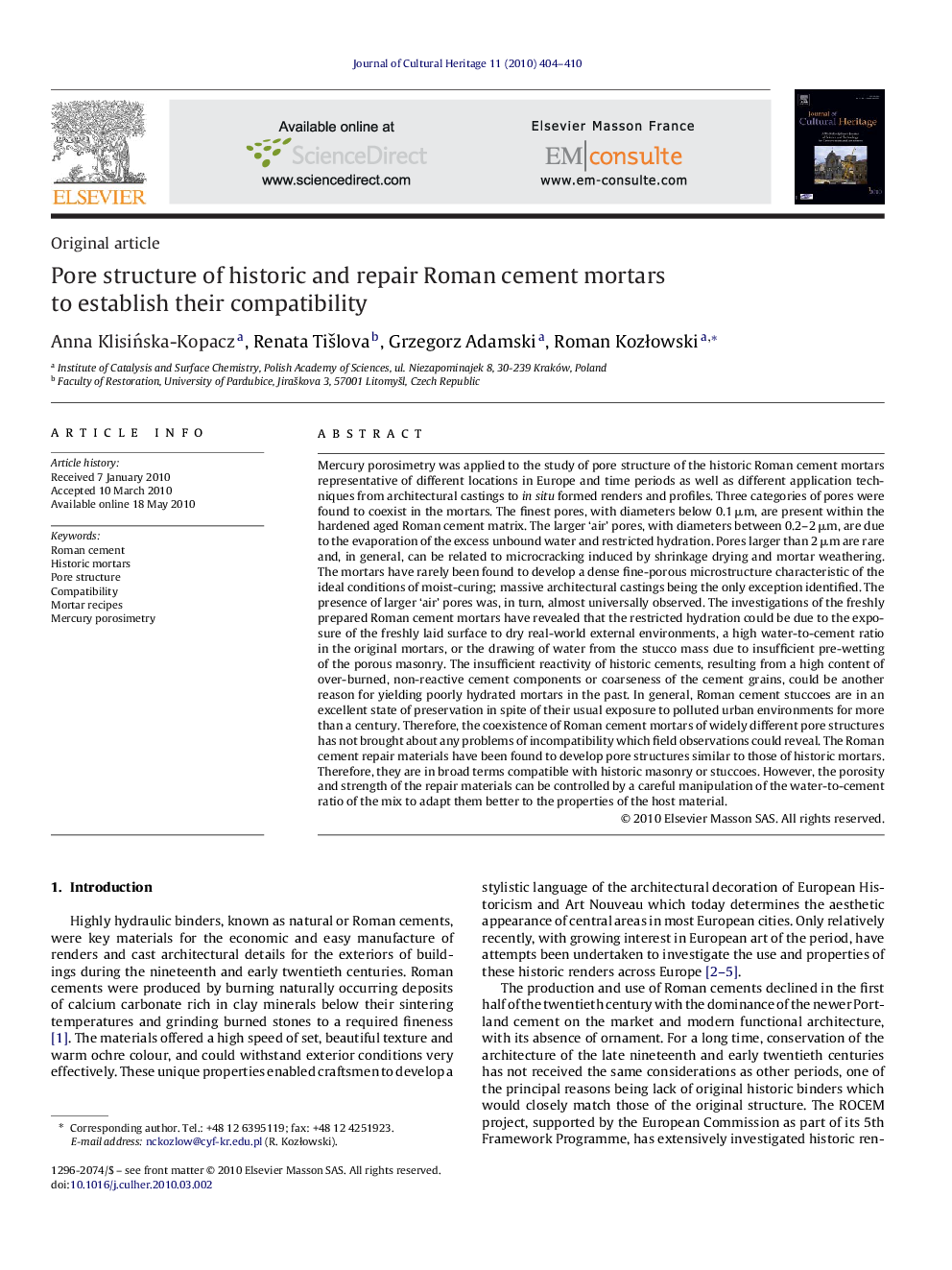| کد مقاله | کد نشریه | سال انتشار | مقاله انگلیسی | نسخه تمام متن |
|---|---|---|---|---|
| 1038560 | 944226 | 2010 | 7 صفحه PDF | دانلود رایگان |

Mercury porosimetry was applied to the study of pore structure of the historic Roman cement mortars representative of different locations in Europe and time periods as well as different application techniques from architectural castings to in situ formed renders and profiles. Three categories of pores were found to coexist in the mortars. The finest pores, with diameters below 0.1 μm, are present within the hardened aged Roman cement matrix. The larger ‘air’ pores, with diameters between 0.2–2 μm, are due to the evaporation of the excess unbound water and restricted hydration. Pores larger than 2 μm are rare and, in general, can be related to microcracking induced by shrinkage drying and mortar weathering. The mortars have rarely been found to develop a dense fine-porous microstructure characteristic of the ideal conditions of moist-curing; massive architectural castings being the only exception identified. The presence of larger ‘air’ pores was, in turn, almost universally observed. The investigations of the freshly prepared Roman cement mortars have revealed that the restricted hydration could be due to the exposure of the freshly laid surface to dry real-world external environments, a high water-to-cement ratio in the original mortars, or the drawing of water from the stucco mass due to insufficient pre-wetting of the porous masonry. The insufficient reactivity of historic cements, resulting from a high content of over-burned, non-reactive cement components or coarseness of the cement grains, could be another reason for yielding poorly hydrated mortars in the past. In general, Roman cement stuccoes are in an excellent state of preservation in spite of their usual exposure to polluted urban environments for more than a century. Therefore, the coexistence of Roman cement mortars of widely different pore structures has not brought about any problems of incompatibility which field observations could reveal. The Roman cement repair materials have been found to develop pore structures similar to those of historic mortars. Therefore, they are in broad terms compatible with historic masonry or stuccoes. However, the porosity and strength of the repair materials can be controlled by a careful manipulation of the water-to-cement ratio of the mix to adapt them better to the properties of the host material.
Journal: Journal of Cultural Heritage - Volume 11, Issue 4, October–December 2010, Pages 404–410